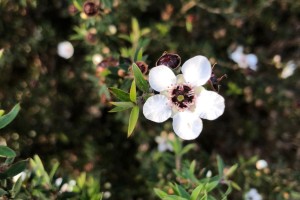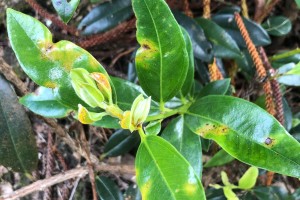Beyond Myrtle Rust
In this section
The fungus that causes myrtle rust (Austropuccinia psidii) arrived in New Zealand on wind currents in 2017. To date, it has been recorded infecting many ecologically, culturally, and economically important species in the Myrtaceae family, such as pōhutukawa and mānuka. Myrtle rust strikes plants at all life stages, causing dieback and potentially death. New plant growth is particularly vulnerable to infection, and the disease is therefore most visible during spring and summer, when plants typically produce the most new tissue.
Austropuccinia psidii has spread rapidly around the world over the past 40 years and has had disastrous effects in some environments. In Australia, for example, it has pushed at least four tree species to the brink of extinction. Eradication of myrtle rust has never been achieved but it is vital we try to increase ecosystem resilience to the fungus and help local communities protect our taonga trees. If you would like more information about myrtle rust and what you can do if you see it, see the FAQ.








![[Metrosideros excelsa]: Beyond Myrtle Rust Seminar Series](/assets/Discover-Our-Research/Biosecurity/Beyond-Myrtle-rust/Metrosideros_excelsa_bmr-seminars__FillMaxWzMwMCwyMDBd.jpg)

![[Austropuccinia psidii] on [Syzygium australe]. Image: Peter de Lange.](/assets/Discover-Our-Research/Biosecurity/Beyond-Myrtle-rust/Austropuccinia_psidii_on_Syzygium_australe__FillMaxWzMwMCwyMDBd.jpg)


